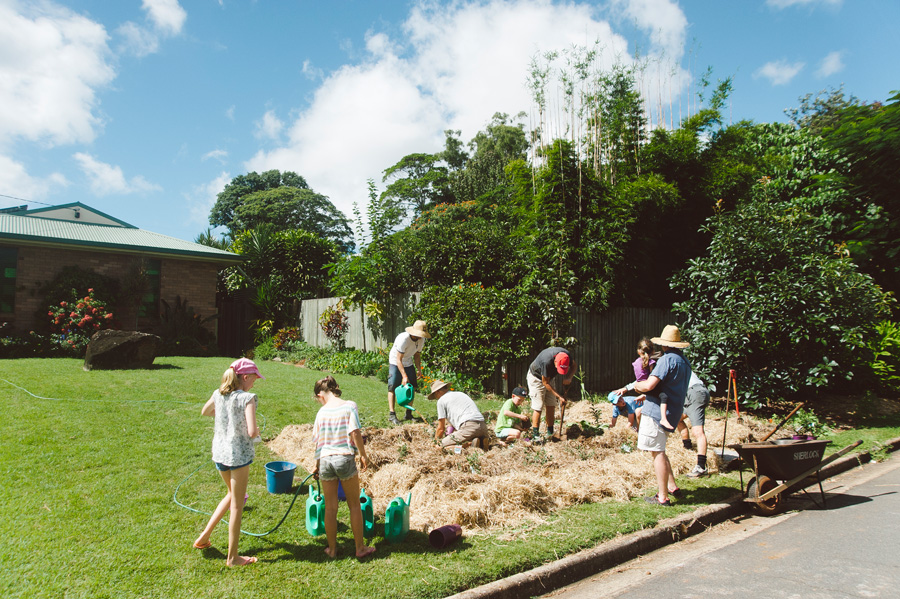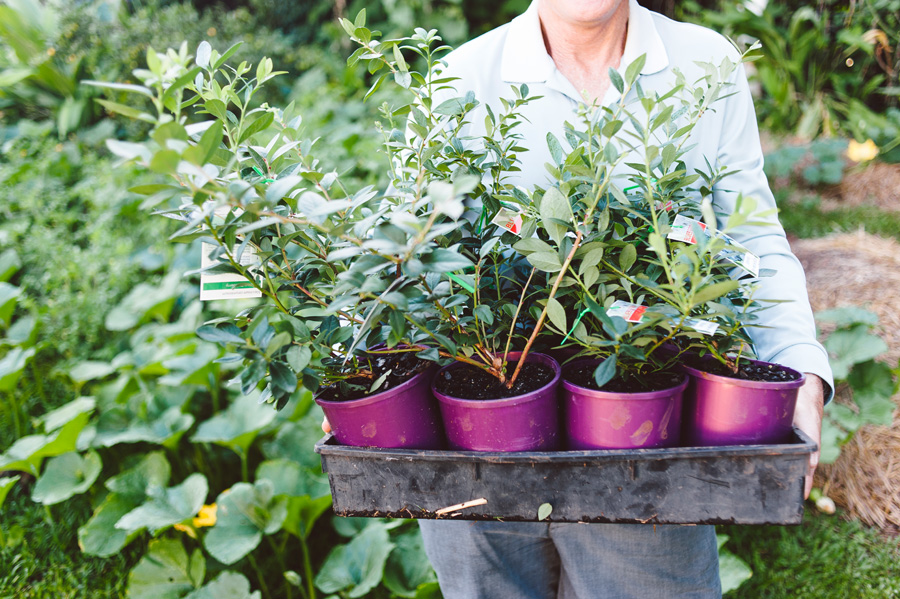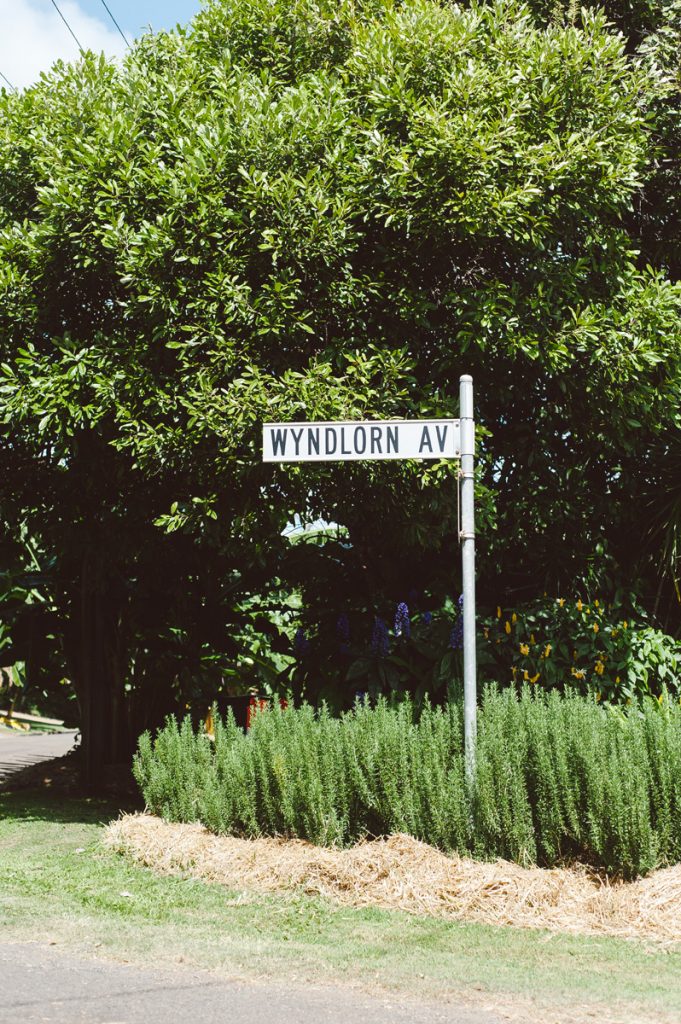Urban Food Street
Out in the ‘burbs of Buderim, Queensland, a neighbourhood has banded together to reinvent their streets as edible gardens.
Ever wondered what it would be like to have an urban larder of fresh food at your front door? As the impact on the environment of a sprawling suburban lifestyle becomes apparent, an intimate warren of 11 residential streets is challenging the traditional role of the suburb through the adaptive reuse of its physical dimension.
It’s early on a Sunday morning. The day is abnormally warm for this time of year. Discussions of climate change linger in the air as a crowd gathers at the end of a quiet cul-de-sac for the Urban Food Street monthly working bee. The location, formerly known as Wyndlorn Avenue, is now known as Kids Garden.
In this neighbourhood, traditional street names have been replaced in favour of finding a way to associate them with the edible plants that grow in that location. Banana Street, Avocado Lane, Mediterranean Corner and The Grove all feature on the official Urban Food Street map.
Neighbourhood families gather on the street in celebration. They are here to challenge the car obsessed status quo of our roadways and nature strips by planting edibles on the verge. Fencemounted chalk boards announce the agenda of the morning, as the army of familiar faces prepare to sow 50 strawberry runners, 50 low-chill blueberry bushes, kale seedlings, cabbage seedlings, herbs and bee forage across four verge locations. Monthly working bees are paying off, as families realise the many benefits associated with a physical dimension that has been retrofitted to accommodate a different way of living in the “burbs”.
Kids of all ages commandeer the street. They ride bikes, trikes and skateboards in bouts of ownership-induced merriment as the suburban language associated with the traditional function of the street moves from a stance of car-centric domination to people focused activation. It is not uncommon for the kids to take over this particular part of the neighbourhood. They have been meeting here and using the roadway for play and exploration since the Kids Garden was established 18 months earlier.
Supported by a handful of neighbours and answering the call of prominent architect, Ken Maher, in 2009 for “architecture that reflects life at a deeper level”, 24 citrus trees were planted along the side of a single residential street that year. At the time Maher was asking the industry to examine its role in designing a different future. The high price of a lime motivated a discussion about the benefits of moving the backyard vegetable plot to a suburban verge location and replicating this at the scale of the neighbourhood. Edible plants, accessible to those who live in the contributing streets, became the catalyst for a broader conversation about neighbourhoods designed in recognition of a sustainable future and thus Urban Food Street was born.
Take a stroll around that area today and you will discover a collective of 200 households creating a suburban genre that is unlike any other in Australia. Urban Food Street is grounded firmly in the economic advantages of neighbourhoods designed for social and environmental sustainability.
Using the principles of permaculture the venture is progressively future-proofing the streets through an integrated landscape that is consumable in nature. Seeded as a citrus grove along the verge of one residential street seven years ago, the project now consists of six streets producing spray-free food from over 20 edible tree species, complemented by herbs, spices, rhizomes and seasonal crops. Last year Stephen Street, aka Banana Street, produced over 900 kilograms of spray-free fruit. Hard to believe that some species are now so prolific that commercial quantities of fresh fruits, vegetables, herbs and spices are being grown within the context of the suburban landscape.










